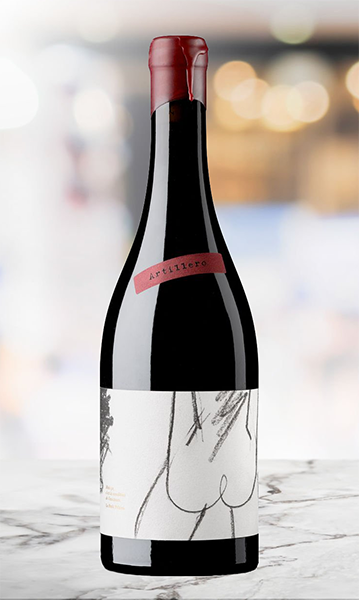
Pinot Noir is well known worldwide for its “delicacy.” Not only in terms of flavors but also for being extremely fragile and tricky to grow. Divinely scented, gorgeous fruit expression and a velvety palate, are some of the qualities that get Pinots among the World’s most treasured wines.
Most winegrowers will agree Pinot is not an easy one, what makes it so tricky to grow? Pinot Noir is a thin-skinned grape that is extremely challenging to grow in certain climates and soils. As it ripens relatively early, so it is not suitable for too hot and sunny regions. Also, as much as it thrives in cold areas, it is highly sensitive to autumn rains. On top of that, Pinot Noir is also highly susceptible to the yields, and it produces low to moderate crops (compared to other varietals).
What does Pinot taste like?
Pinot is expressive and hard to get right, but when it works, it is superb. Sensitive to climate, soil, yield, and winemaking techniques, Pinot Noir checks all the boxes to be the most Terroir driven grape. In other words, Pinots can develop extremely different characters, depending on where it is grown. The main Pinot producing regions are:
France:
In Burgundy, Pinot Noir usually develops a subtle herbaceous profile with a light earthy aroma, mushrooms, and wet leaves. Also it tends to be floral, full of red cherries notes, and very soft tannins along with the earthy character.
Germany:
Germany produces Pinot Noir with riper fruit, raspberry, and sweet cherry aromas. In the palate, they tend to be more alcoholic and more structured than their French counterpart.
Italy:
The cold climate in northern Italy makes an excellent terroir for this grape, locally known as Pinot Nero. The fruit profile is quite similar to that of France, with notes of smoke, tobacco, white pepper, and clove are more evident.
California, USA:
When picturing what New World Pinot Noir is all about, Californian style is exactly what might come to your mind: intense, flavorful, and broad in the palate. Expect them to be more fruit-forward, higher in alcohol, and have a much more evident oak influence. If you are used to drinking Californian wines, you’d love them. If you are looking for a more delicate style, Slightly colder regions as Carneros and Sonoma Coast could be the right choice for you.
Oregon, USA:
Oregon, on the other hand, with much “Burgundian” on its style. Lighter in color and texture, fresh and leaner, Oregon pinots tend to develop cranberry, bing cherry fruit flavors with secondary aromas of truffle mushrooms.
New Zealand:
The Central Otago region, located in the South Island, gets enough sunshine throughout the season to produce a luxurious and expressive Pinot Noir style, with a structured body and high about 14%. They are commonly compared their Californian counterpart, but with more robust spice and meaty aromas.
Australia:
Pinot Noir benefits significantly with the oceanic influence of the Mornington Peninsula, Margareth River, and Tazmania, where it delivers full ripe fruit notes on the black fruit spectrum (blueberry and even blackberry).
Chile:
Chilean Pinot Noir develop notes of cherry, cranberry, and strawberry, and tend to produce balanced and subtle wines with a light body and moderate acidity.
What food goes with Pinot Noir?
Pinot Noir is light enough for some fishes like salmon, but complex and layered enough to hold up to some richer meat like a duck. It goes amazingly with mushrooms since the earthiness elevates the fruit in the wine. It is the versatile type of wine that will make everybody in the table happy.




